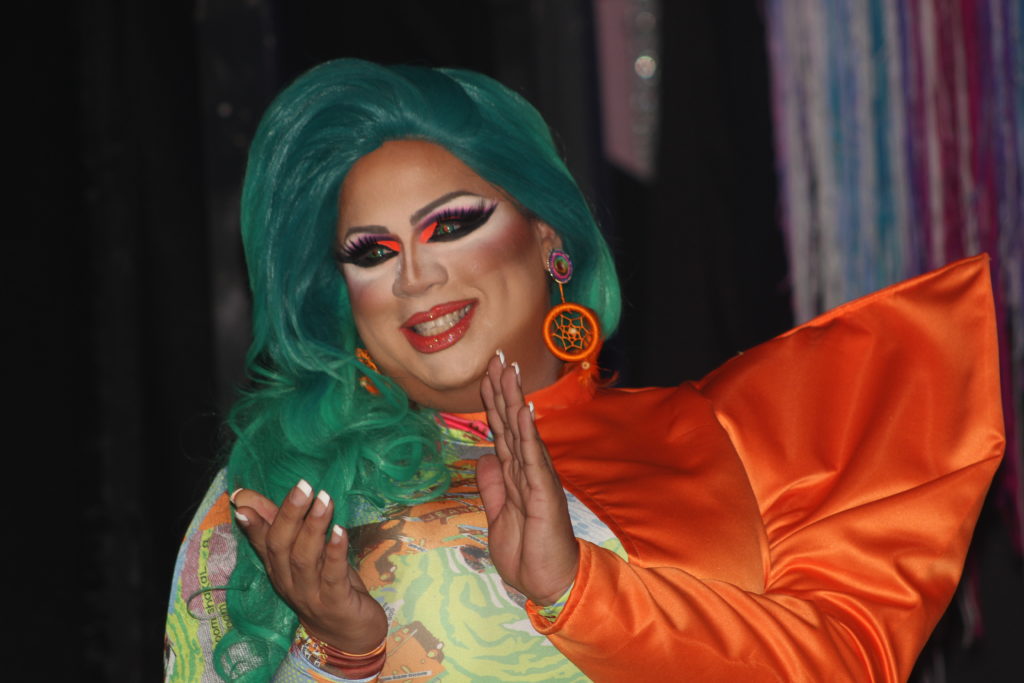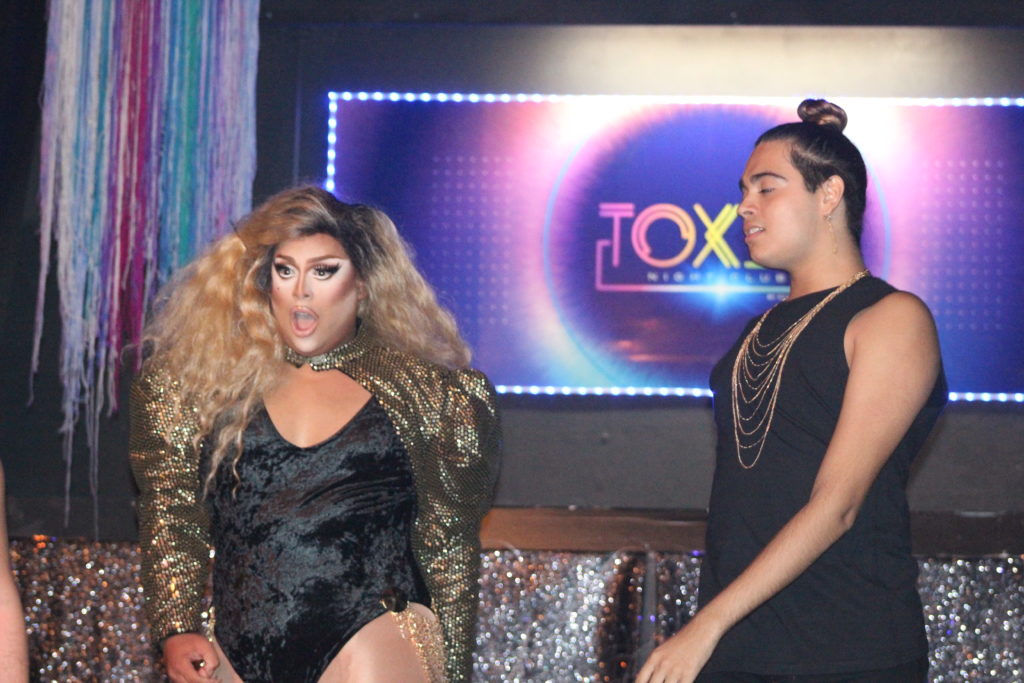
Throughout the decades, transformism in Puerto Rico has been established as a practical art, recognized worldwide by the talent of these artists known as drag queens, as well as the quality of their performances. The number of people that visit these night clubs where they present, increases each time due to the attention these talented performers showcase on stage. Their art is primarily illustrated as a form of entertainment where they can flourish in theater, dance, social activism and most importantly, express themselves freely in the best way possible.
The art of transformism sounds interesting, but what exactly does it consist of? What is it about drag that sparks this curiosity on the audience and how does the public in Puerto Rico respond to it?
The Controversy

“Primarily I feel like drag is controversial due to its name. People don’t educate themselves enough, which is why it simply bothers them to know that a man can dress as a woman,” expresses the transformist, Isabelle Houston, after her performance on stage.
“Fact of the matter is that if people see a woman dressed as a male, it’s normal, but on the other hand, when they see a man dressed as a woman, that’s when they start saying wow; you know? I think many people lack education on this topic and that’s why some reject it, because they fear what they don’t understand,” adds Houston.
With this in mind, it’s important to educate in terms of notions and concepts pertaining to the LGBTT community. Transformist Isabelle Houston expresses that people sometimes hear the word drag and think that the person is in the process of taking hormones or that they are prostitutes and that’s not always the case, because a drag queen is an artist that does a performance at night or during the day while dressing as a woman (which today we know as transformism). On the other hand, a transvestite is a person that lives their day to day life as a woman, but was born biologically as a male. Moreover, transsexuals are people that are in the process of changing their gender assigned at birth because they are in that transition; lastly, a transgender is the person that finally has changes done in their bodies such as breasts and vulva.
In other words, transformism is merely defined as an activity where a male transforms into the gender of a female through their attire, fashion, extravagant makeup, tucking and elaborate hairstyles to characterize a celebrity or a character through the performance on a show.
According to the performer Khyra ‘Andersson, due to lack of information and good guidance, many human beings think that being gay or into transformism is something that sticks to others and that is not correct.

Several drag queens were interviewed and most agree with the how important it is to educate and inform the public on the topic of transformism, especially in the island of Puerto Rico where transformism is still not fully accepted and might fright people.
“It’s hard, it’s truly hard even for myself because even though I’m openly gay, I remember a time in my life during my teenage years where I found myself frightened by transformism because I was uninformed and associated this activity with the topic of sexual transmitted diseases, also with prostitution and with the underworld. But that’s because the world still isn’t familiar and hasn’t truly met or accepted transformism. I believe there are communities that don’t digest it nor process that this is literally just a form of art and expression.»
Transformist Isabelle Houston expressed on the matter
Historically, the discrimination and intolerance against people from the LGBTT community on the island has generated different forms of resistance and has even provoked migration. Meanwhile, for Puerto Ricans that were born in the United States, being gay or lesbian or transgender (or practicing any divergent sexuality from the dominant model) can have different connotations.
“It’s not fully accepted yet, back then we used to have nightclubs all around the island, like in Ponce and on the west side of Puerto Rico, like Krash Klub and Star. We had a lot of clubs that were crowded from Sunday to Sunday where they used to do beauty contests during the week and people would even miss going to work just to go and see the shows! But honestly, transformism in Puerto Rico has diminished and that’s why it’s reduced for the LGBTQ+ community”, Houston added.
A lot of Puerto Ricans on the island and Americans in the United States have been late to recognize and accept people that are queer, most specifically, in allowing them to live openly and showcase their identity in a public manner.
First Nightclub

To understand this art form we need to look to where it all started. The beginnings of this scenic art in Puerto Rico go back to the decade of the 60s, when this art was illegal in our country; It was at that time that «El Cotorrito» was inaugurated, located in San Juan and founded by the producer and director, Johnny Rodríguez.
According to the transformist Rochelle Mon Chér, Krash Klub was the first nightclub that produced the most popular transformism show in Puerto Rico and the Caribbean, with the presentation of national artists such as Antonio Pantojas, international artists, constant attendance of celebrities from the show and politics, such as Olga Guillot, Myrta Silva, and the former mayor of San Juan, Felisa Rincon de Gautier.
Between the 1990s and the 2000s, the «Krash Klub» nightclub opened its doors, marking the history of the LGBTT community forever. The club operated for more than 20 years and distinguished itself by offering quality entertainment and a festive night atmosphere that became recognized around the world.
Undress the soul

Naylea Mckenzie’s performance
A huge part of drag is the element of putting on a show. Lip synching, singing, and dancing to iconic LGBTQ+ music is common in the world of queer performance and often result in stages covered in dollar bills. Lip sync favorites include Beyoncé, Whitney Houston, and Lady Gaga, but every king and queen has their own styles and preferences. The ability to hold and engage an audience is essential to a performer and drag is no different.
Types of performances
According to Isabelle Houston, there are different types of performances. There’s extravagance, then there’s the performance where you emulate what a woman is, which is Isabelle’s preferred style.
On the other hand, there’s a performance called Dark Beauty which is reflected on the stage when it’s showcased. “My performance is mostly based on dances to keep the demanding public entertained, as is the LGBTT community. In the same way I have competed in several competitions which are evaluated by categories such as Presentation, Swimwear, Talent, Evening Outfit and Question,» Drag queen Khyra ‘Andersson shared.
Empowerment
Drag is a liberal form of empowerment. “I’ve always said that transformism is art and everything that’s considered art is a way to undress the soul. Humans are very creative by nature, we’re filled with art just like a painter would be, a poet or maybe even a pianist. We always find a way to unburden ourselves through our talent and transforsm works the same way. We try to find one way or another to choose a song, a look, time and place to undress what we feel and what we are” Isabelle Houston expressed.
Drag not only includes drag queens, but also drag kings, and bio drags. The exhibition demonstrates that drag allows for a creation and constant transformation of oneself, it shows we can be glamorous, funny, and political.
According to drag queen Khyra ‘Andersson, it is a way of detaching yourself from your world and forgetting many things at least for a few hours.
As the artists in this exhibition illustrate, drag draws attention to the way that gender is constructed, choreographed, or performed in our everyday lives. However, it would be misleading to think drag focuses solely on gender. Drag also deconstructs ideas of race, class, taste, and education.
Transformism is an art like any other in which many are passionate and do it to entertain, free, express and, have fun. «It is not something that hurts someone since it is not done for that purpose,» ‘Andersson added. “I would simply invite a person that isn’t familiar with the act as an observer to see the work that one does on a platform to demonstrate the aforementioned”, Khyra finally expressed on the matter.
Competitive field

Drag has changed significantly in the island. The era, fashion, look and performances are very different now in Puerto Rico compared to how it was before. “The industry has changed remarkably; it mainly lacks commitment. Nowadays the younger generation of drag queens are usually interested in being competitive against one another. They focus on competing among themselves instead of focusing on the art.” Drag queen Isabelle Houston explained.
In a competitive environment, tensions can run high and disagreements can erupt. Conflict is a part of life, but the outcome depends entirely on how you handle it. When the queens start «throwing shade» and «reading» each other (these are drag slang terms for passive-aggressive insults), they can either let it get to them and throw them off, or let it slide.
According to the expert and activist Christian Marcano, the rivalry and division between the transformist of the same country inside and outside of it is a common issue in the industry. “Many tend to take it very personally and at least tend to argue. Besides that, each time the community is less united,” Khyra ‘Andersson informed.
Back on track

In this moment, drag culture is bigger and more popular than it’s ever been. RuPaul’s Drag Race has just had its most successful season yet. With its move from Logo to VH1, it racked up almost 1 million viewers for the premiere and held strong with over 800,000 season finale viewers. As a matter of fact, an inspiration for performing and continuing in this art for ‘Andersson (besides dancing) was the «Rupaul Drag Race» program.
People should give drag a chance. They should give themselves an opportunity to encounter new experiences, new facets in life and new talents because it’s truly a divine form of art.

